Ignorance can be a blessing. I know nothing about El Salvador and have no expectation at all. After having spent four days in Suchitoto, a lovely and tranquil colonial city and Los Cabanos, an authentic fishing village on the Pacific Ocean El Salvador has made a great impression on me and I love to return to find out more about the country one day.
Background
El Salvador is the smallest (21,040 km²) and the most densely populated country (5,744,113 according to the 2009 census) in Central America. Like all other countries in Central America, the Spanish conquered the area in 1524. The indigo plant was El Salvador’s most important crop during the colonial period. Hacienda feudalism created a rich ruling elite and indentured labour force. Central American provinces broke with Spain in 1821 but were annexed by Mexico. In 1823, these provinces won independence from Mexico and formed the Federal Republic of Central America. In 1841, El Salvador declared independence and the Federal Republic was dissolved.
The new nation has been going through political upheavals and endless troubles since independence. In 1931 General Maximiliano Martinez seized power in a coup starting 50 years of military rule. In 1932 communist-led rebellion broke out resulting in a week-long massacre by government forces, ‘La Matanza’. Between 1932 and 1980, the country was jointly ruled by the military and oligarchies.
In 1969, El Salvador attacked Honduras in the six-day ‘Soccer War’. In 1980 Leftist opposition parties and guerrillas groups joined forces to form the FMLN-FDR while right-wing death squads waged terror campaigns. Archbishop Oscar Romero was assassinated and full scale civil war began and peace accords presided by the United Nations and the Catholic Church were signed was finally signed in 1992. In March 2009, Mauricio Funes became the first president from the FMLN party to win the election and one focus of the new government has been to reveal the alleged corruption from the past government. Stability has gradually returned thought crime remains a major problem.
Salvador Today
El Salvador has a long history of destructive earthquakes and volcanic eruptions. San Salvador was destroyed in 1756 and 1854 and suffered heavy damages in the 1919, 1982 and 1986 tremors. It has also been at the mercy of natural calamities including flooding, hurricanes and tropical storms.
Agriculture has played an important part in its economy. Between 1871 and 1927, coffee production began to dominate the country’s economy. Hence it was known as the Coffee Republic. By the early 20th century, coffee accounted for 90% of the country’s export earnings. The economy has diversified and by 2004 with contribution of coffee production to export earnings dropping to 7%. Since 2001, the country has adopted the US dollar as its currency. For 2012 the estimated GDP (PPP) and GDP-per capita (PPP) is $49.09 billion and $7,600 respectively.
The population is composed of Mestizo (86%), White (12%) and Indigenous (1%). The only World Heritage Site in the country is Joya de Cerén, a pre-Hispanic farming community that like Pompeii was buried under an eruption of the Laguna Caldera volcano c AD 600.
May 5 Monday: Copán, Honduras – Guatemala – Suchitoto El Salvador (240km; 8hrs) + border crossing
We sped through Guatemala in about two hours and reached the border with El Salvador at Anguiatú around 11am. I slept most of the time as I felt unwell. When we stopped for lunch at Metapán at 11:45am, I suddenly found myself sweating so profusely that my T-shirt was soaking wet within a few minutes. I felt better thereafter and thought my trouble was over.
After lunch, we drove for another two and a half hours. As we were camping that evening, a cooking team under Amy’s leadership went shopping at Suchitoto at 3pm. I visited Iglesia Santa Lucia, the most prominent building in the heart of the town square. It has an impressive neoclassical front and a fine wooden columns inside.
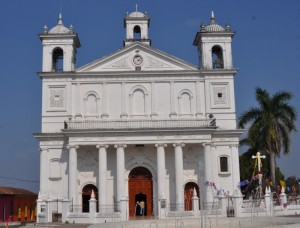 |
At 4pm, we arrived at a camp site by Lago de Suchitlán. As I was sick, I got a cabana by paying $20 extra hoping I could have a good sleep. A private toilet is useful when one is sick. Yves arranged all the sick people to go to see a doctor the following morning. I said I would join the ‘sick team’ if I still had a fever. By dinner time, my condition deteriorated. After having a small bite, I left the group to go to sleep at 8pm. My temperature was 39.6ᴼC again.
Torrential rain started to pour down. As the window of my cabin is constructed with solid thick wood, no light can come through. I was in total darkness once I turned off the light. (The next morning, my friends said that there was lighting throughout the night and their tents all got wet and muddy). I took my temperature several times that night and found my body temperature fluctuated between 36.6ᴼC and 39.6ᴼC. I got up a few times to go to the toilet and knew something was definitely wrong.
May 6 Tuesday: Suchitoto
At 7:15am, Rene and Yves took Tim, Yvonne, AJ and I to a local clinic run by the Order of Malta. AJ had a deep wound following an accident during her volcano boarding in León. Yvonne had been coughing for weeks, Tim who has been bitten by insects/bugs had skin infection. There was long queue at the clinic when we got there. So Rene arranged to go on our sight-seeing tour first and return around 10:3am.
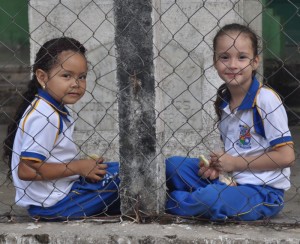 |
|
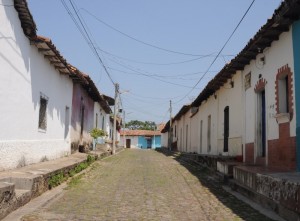 |
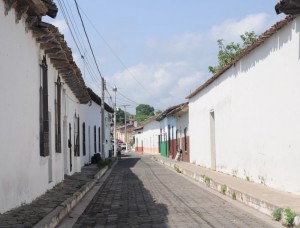 |
Suchitoto, a cobbled and colonial town, perches on the ridge above the southern edge of Lago de Suchitlán. During the 1980s, the area was the scene of bitter fighting as the army tried to dislodge the guerrillas from their nearby mountain strongholds. The town which has been spared of bombing by the army, has been revitalized in recent years. It is now a site of National Cultural Heritage.
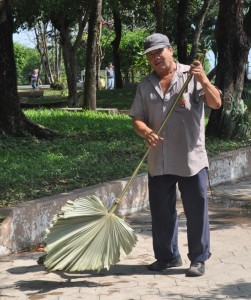 |
We had a good guided tour with Rene with several stops. Our first stop was the Art Centre for Peace run by a NGO headed by an American lady who first came to the country to work as a volunteer during the 1980s. She loves the place and the people so much that she has stayed on. Three rooms are used to exhibit photos and items donated by locals. There are also some interesting art works displayed in the courtyard. There are designated rooms for dance, music etc.
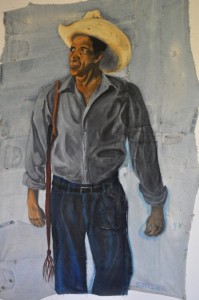 |
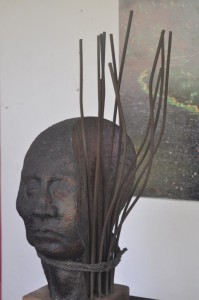 |
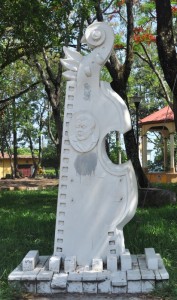 |
Rene told us briefly about the importance of the indigo business which has made Suchitoto a rich town during the colonial era. Following the discovery of chemical dye, the indigo industry went to a decline. The rich businessmen then switched to coffee plantation and the town continued to prosper. When peace and life gradually return to normality since 1990s, the town with its beautiful setting, well preserved architectures and series of on-going art and cultural performances has become a favourite spot for both local and international tourists.
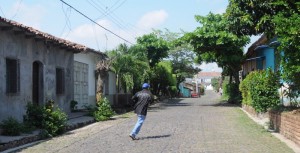 |
The second stop was the Parque San Martin with a statute of Alejandro Cotto, a famous Salvadoran writer and film-maker who has been responsible for raising the profile of Suchitoto as a centre of culture.
We then went to the house of an 85-year-old cigar lady who is still rolling out some 300 cigars a day! She looks healthy and blissful! Her secret of longevity in her own words is ‘no wine, no smoking and no marriage’!
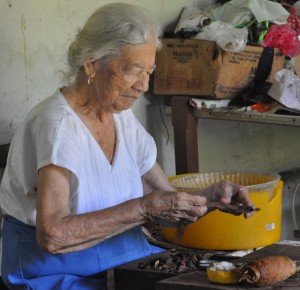 |
Instead of following the group to Iglesia Santa Lucia, I returned to the clinic and was examined by a young lady doctor. She suspected that I might have caught Dengue fever and asked me to take a blood and urine test in a hospital in San Salvador, the capital. I could receive proper treatment if necessary. I paid $3.3 for the consultation and 50 cents for a couple of pills prescribed by the doctor.
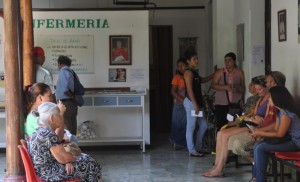 |
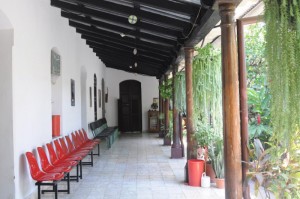 |
Rene and Yves thought I could take the two tests in the local government clinic first. When the results were available in about two hours’ time, we could decide the best course of action. Both Yves and I did not want to delay the group programme. Hence I would stay in Suchitoto while the group would go to Cerro Verde. I would take a taxi to Los Cobanos to meet up with the group the following day. Yves would stay behind with me while Tom would drive the school bus with the group to camp near Cerro Verde. Freddie Boy (the Dutch who prefers to be called Freddie Boy) who does not like camping immediately decided to stay on in Suchitoto with us. We saw Bessy off around 1:30pm.
Going to a local clinic is always an interesting (though not enjoyable) experience. In order to take a urine test, I had to drink almost a litre of water at the clinic. It is torture! I returned to the clinic at 3pm and was relieved when the doctor on duty told me that I had kidney infection and not Dengue fever. I was given some anti-biotic and two other types of medication all for free as the government provides free medical service.
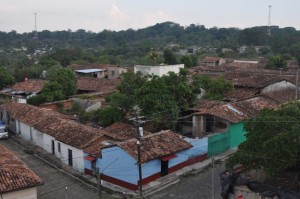 |
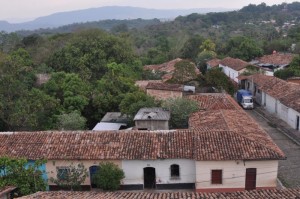 |
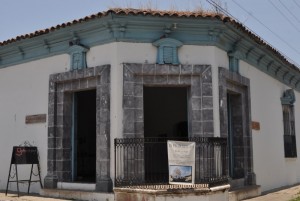 |
Rene found three rooms for us at a local hotel. I paid for $8 for a simple room with a fan while Freddie Boy paid $17 for a room with air-con. My room is barren and not comfortable: I therefore spent most of the day strolling in town, visiting some interesting colonial buildings which have been turned into cafés, galleries, bars and hotels. I had coffee in the garden café of the best hotel in town followed by a nice dinner with a mixed grill in a restaurant by the square. I indeed had a lovely time in Suchitoto after three days of fever, pain and anxiety.
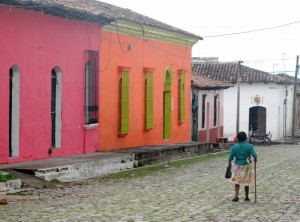 |
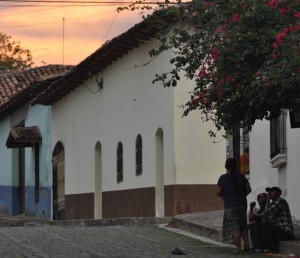 |
May 7 Wednesday: Suchitoto – Los Cobanos (200km; 3hrs)
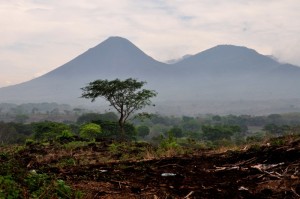 As there is no direct transportation between Suchitoto and Los Cobanos, I had to take a taxi which would cost $125. Instead of getting me a taxi, Rene decided to drive himself. After dropping me off, he and his wife went to stay with a friend near our hotel. In this way, he pocketed $125 and had a free ride for a beach stay. I do not mind finding a win-win formula. But on this occasion I think Rene is too clever and calculating making the best deal for himself! I do not like his approach and would not like to work with such a person.
As there is no direct transportation between Suchitoto and Los Cobanos, I had to take a taxi which would cost $125. Instead of getting me a taxi, Rene decided to drive himself. After dropping me off, he and his wife went to stay with a friend near our hotel. In this way, he pocketed $125 and had a free ride for a beach stay. I do not mind finding a win-win formula. But on this occasion I think Rene is too clever and calculating making the best deal for himself! I do not like his approach and would not like to work with such a person.
We set off at 8:15am and arrived at Los Cobanos at 11am. There was not much going on when we arrived. I walked along the beach to discover a couple of nice restaurants and two dozens of fishing families. The ladies sell cooked fish/food in front of their shed while their men go fishing early in the morning.
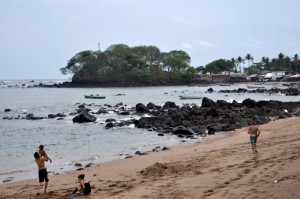 |
As Yves had to wait for the group to arrive before assigning rooms, I spent the afternoon in the sitting area which is hot and humid. I was bitten by mosquitos and sand flies. Finally my friends arrived after 4pm and Victoria and I got a room with a balcony on the first floor.
At 5:30pm, I joined the group to watch sunset. As it was Gordon’s 66th birthday, we had dinner on the beach. I had a fantastic fish soup (with a whole fish) for $8!
May 8 Thursday: Los Cobanos
I had a pleasantly lazy day. Sand flies and mosquitos love my hot blood: I had to take refuge in my room working on my travel notes and photos. At first sight, this fishing village is not picturesque or charming. I however began to appreciate the energy and community spirit after two days’ total immersion.
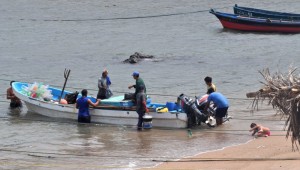 |
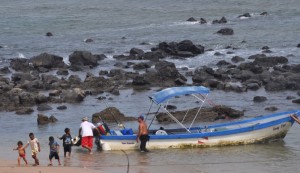 |
The locals recognise me: they greet and smile at me. I watch men coming back with their catch and children running to the boat to greet their kin. People though short on material things look happy and healthy.
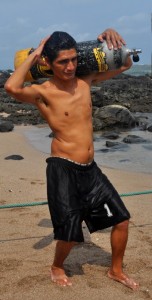 |
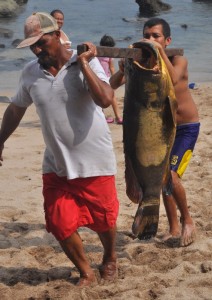 |
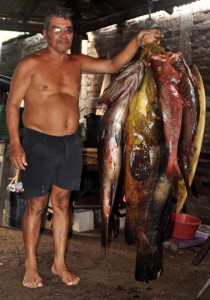 |
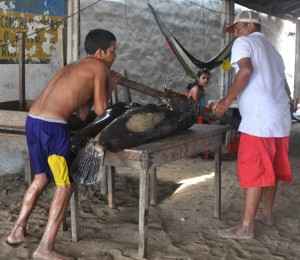 |
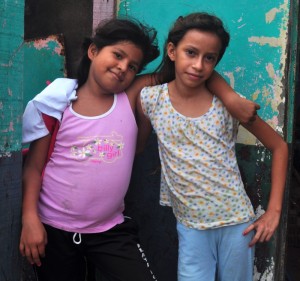 |
Tonight, we went to the same restaurant for dinner. I spent $15 on a crayfish and prawns. But the food was disappointing. I wished I had a steamed fish or a fish or prawn soup instead. While I had no problem with my stomach, many group members felt sick the following day.
May 9 Friday: Los Cobanos El Salvador – Antigua Guatemala (200km; 4hrs) border crossing
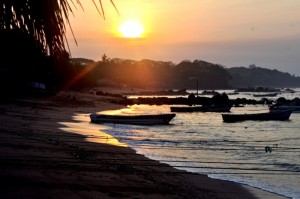 |
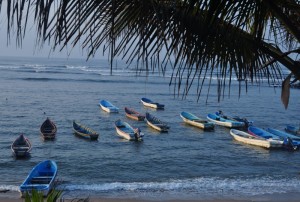 |
After an early breakfast at 6:30am, we left around 7:15am for the border. The drive is pleasant and it took us just over two hours to reach the border. By 10:30am, we were back in Guatemala and were on our way to Antigua.
Remarks
I had the shortest stay in El Salvador and only visited Suchitoto and Los Cobanos. I can hardly say I have seen the country which no doubt appears poorer as compared with other Central American countries I have passed through during this journey. The roads some of which have been destroyed during the troublesome years are not as good as its neighbours. Since dollarization, things have become more expensive and life for the poor people is not easy. Some 2.5 million Salvadorans are living and working aboard supporting their families at home.
I like El Salvador since there are few tourists. I find Suchitoto charming and the slow tempo in Los Cobanos appealing. I hope to return one day to see other parts of the country.
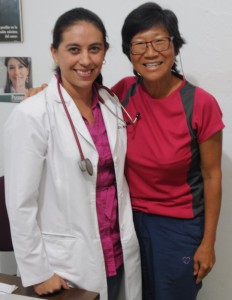 |
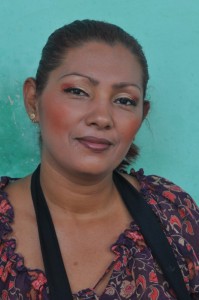 |
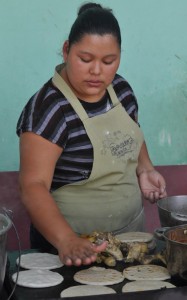 |
My illness has brought me to a clinic run by a NGO and by the government in Suchitoto. The service is not too bad given its level of social and economic development. I am glad that I do not have Dengue fever or malaria. Anyway, I should be more cautious in future: I should consult a doctor whenever I have a fever for more than two days.


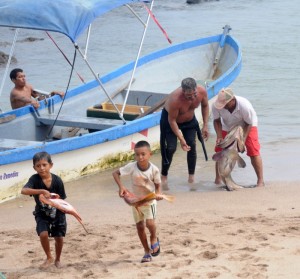
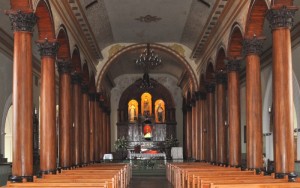
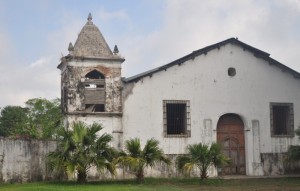
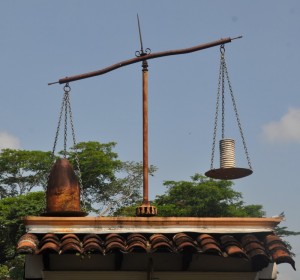
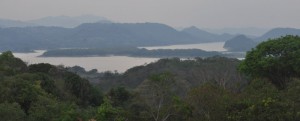
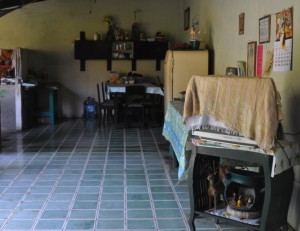
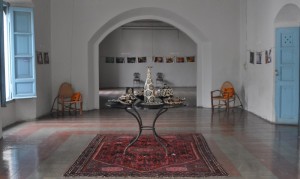
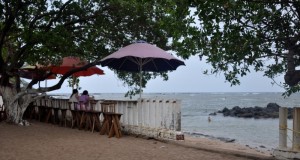
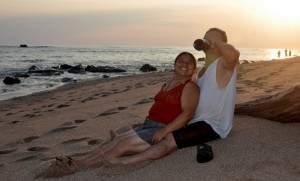
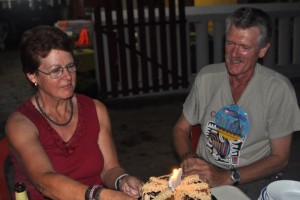
I do hope you are fully recovered now. Dengue fever was a good illness to avoid!